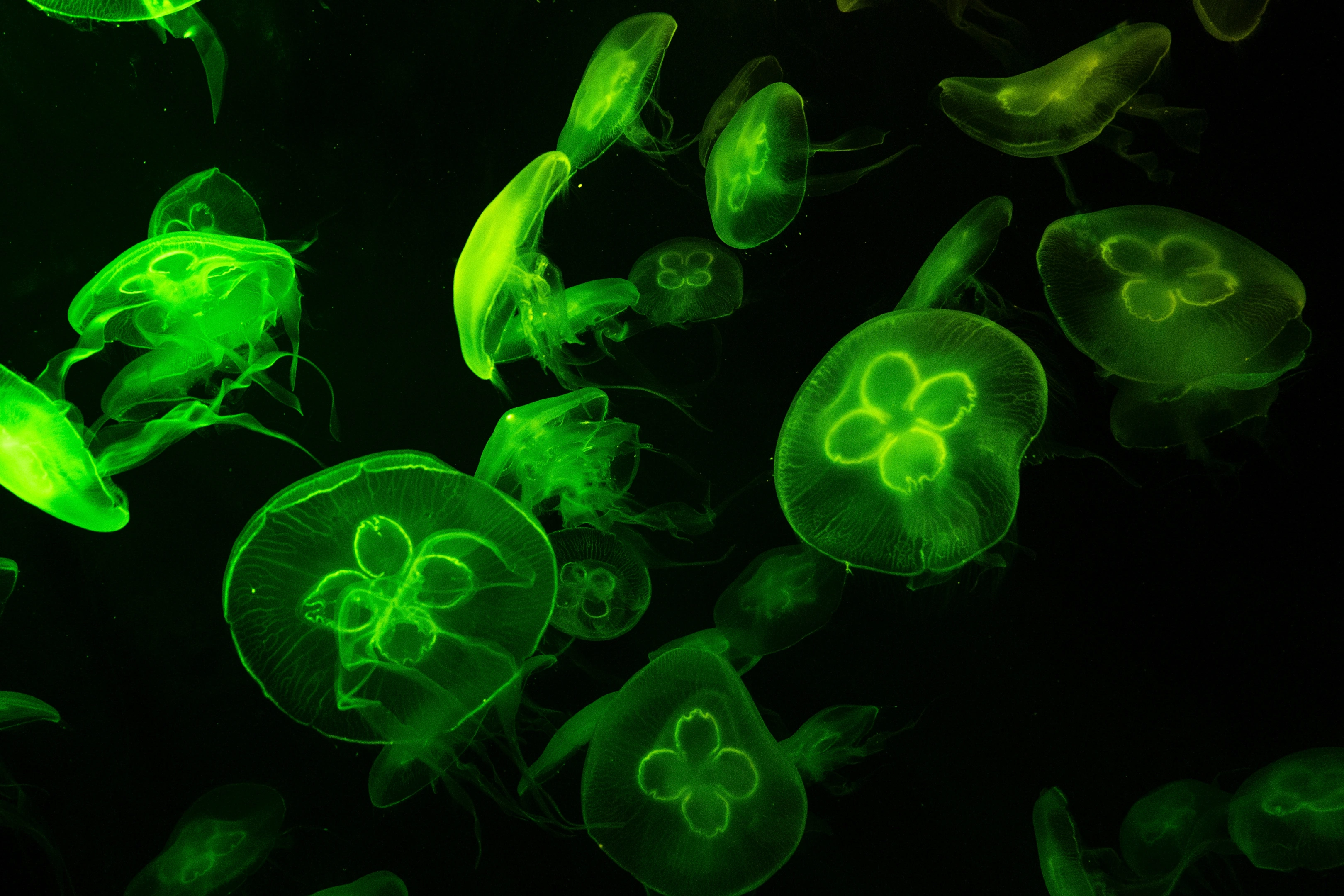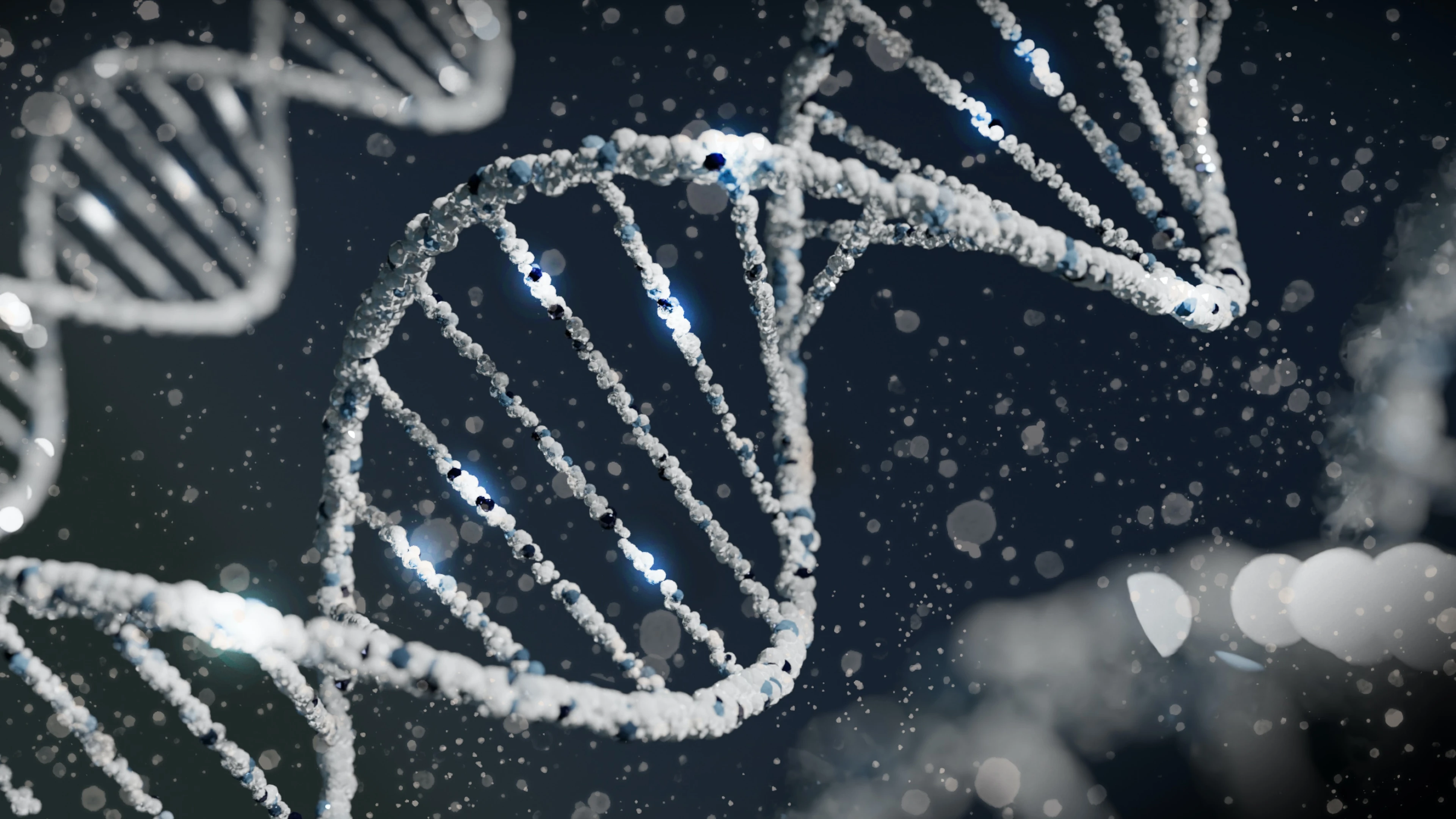What is Evolutionary Fitness and How is it Measured?
Evolutionary fitness, also called biological fitness or Darwinian fitness, is a term common to biologists which appreciates the ability of an organism to adapt to its environment.
It is called Darwinian fitness because the concept was coined from Charles Darwin’s darwinian theory by a British biologist, Herbert Spencer. He suggested that the organisms that adapt to a given environment are most successful in surviving and reproducing and are said to have maximum fitness. Evolutionary fitness gives more insight into the genetical evolution of organisms, and how they play a role in its survival and reproduction of offspring.

Contrary to what is generally assumed on fitness being a state of satisfactory health and physical energy, fitness in biology has a much deeper meaning rooted in Darwinian evolution. Biologists define fitness as the ability of organisms to survive and reproduce in a given population. Physical fitness covers the scope of the overall health and well-being of the organism which is not the same evolutionary or biological fitness. Other terms related to evolutionary fitness are: relative fitness, absolute fitness and inclusive fitness which will be discussed in detail.
In this article, we’ll be delving into evolutionary fitness and natural selection, what it entails and how it can be measured.
Definition of evolutionary fitness and its importance

Predator and prey
Evolutionary fitness can be defined as the ability of an organism to successfully adapt, thrive and reproduce in a given environment. Evolutionary fitness is interchangeably referred to as biological fitness or Darwinian fitness.
Evolutionary fitness is important as it determines if a particular species would either go extinct or continue to exist and reproduce in an environment.
We can see an example of this with some extinct animals like the dinosaurs, dodo (also known as the flightless bird) etc. In their case, there was a shift in environmental conditions to which they couldn’t adapt, and thus they became biologically unfit to survive.
Understanding evolutionary fitness
Understanding evolutionary fitness is crucial as it gives a deep understanding of how natural selection works and why some organisms go extinct. To give a better understanding of the topic, it is further broken down into two components.
Components of fitness: survival and reproductive fitness
The two components of evolutionary fitness are: survival fitness and reproductive fitness.

Survival fitness is fitness in terms of the organism’s ability to remain alive and thrive in a given environment.
Being fit in this context does not necessarily translate to being big and strong, if so, the big dinosaurs would be alive till date. The term “Survival of the Fittest” coined by the British biologist from the Darwinian theory helps explain this phenomenon.
Having survival fitness simply entails the ability of an organism, no matter how big or small, to adapt to an environment under certain conditions.
The longer an organism continues to exist in an environment, the more its survival fitness.
Reproductive Fitness
Reproductive fitness is fitness in terms of the organism’s ability to reproduce. Reproduction in this context is the ability of an organism to pass on its genes and traits to its offspring or future generations.
Inability for an organism to reproduce offspring or transfer its genetic information to the next generation in an environment will lead to subsequent extinction of its species. Such organisms are said to lack reproductive fitness.
The more offspring an organism is able to produce, the more reproductive fitness that organism has over the other. Organisms that are unable to produce enough offspring are said to have lower fitness, while organisms that produce more offspring have higher fitness.

Role of fitness in natural selection and adaptation
Natural selection simply put is a mechanism of evolution where organisms that are biologically fit are naturally chosen to survive and reproduce so they could pass on the genetic information or genes that helped them be fit.
Biological fitness or Darwinian fitness is very crucial to natural selection and adaptation. This is because it is only the biologically fit organisms that will be naturally selected to continue their lineage. Natural selection goes hand in hand with biological fitness.
Measuring evolutionary fitness
Evolutionary or Darwinian fitness is difficult to accurately measure. However, ways employed to quantify fitness are by: direct measurement and indirect measurement.
Direct measurements: survivorship and fertility analysis
The direct measurement of evolutionary fitness involves two components which includes: suvivorship and fertility analysis. Analysis of these components are used to directly measure an organism’s biological fitness.
Survivorship Analysis
Survivorship analysis, also referred to as duration analysis or time to event analysis, is a set of statistical estimations done to assess the duration of survival, survival rate, life span or life cycle of an organism of a particular species.
In other words, it measures the time frame until the organism dies.
An organism with a low survival rate or lifespan most likely has a low biological fitness. The higher the survival rate or lifespan, the fitter the organism.
Fertility, also known as fecundity, is defined as an organism’s ability to reproduce and bear forth offspring in which their genetic material has been transferred.
Fertility analysis is done to assess the reproductive potential of organisms of a given species.
If an organism has low fertility or fecundity, that organism most likely has a low biological fitness. The more the fecundity or fertility of an organism, the more biologically fit it is. In other words, the more the number of offspring an organism reproduces, the more genetic material is transferred from one generation to another, and the more biologically fit that organism is.
Indirect measurements: phenotypic traits and fitness proxies

Identical birds
Indirect measurement of evolutionary or biological fitness involves phenotypic traits and fitness proxies. These two components are used to indirectly measure an organism’s biological fitness
Phenotypic traits
Phenotypic traits are visible characteristics, features or traits that are observed in an organism. Such traits may include: behavior, coloration, size etc. In humans, these traits include: skin color, hair color, height, genotype etc.
Phenotypic trait expression is determined by the genes or genetic material that was inherited from the parents. The abundance of a particular phenotype in a given population indicates the biological fitness of that species.
It is sufficient to measure the biological fitnesses of asexual populations by the abundance of a particular genotypes or phenotype. This is because their genes are transferred just as they are. However, in the sexual population, there is mixing up of genes from both parents leading to scrambling of genotype abundance, which may then lead to slight variations in fitness among a given generation.
Fitness proxies are traits, parameters or values related to fitness and allows for the indirect measurement of fitness.
Here, annual reproductive rates and growth rate of the organism is used to determine the biological fitness of that organism.
Relative fitness, absolute fitness and inclusive fitness
Evolutionary or Darwinian fitness may be determined by: relative fitness and absolute fitness. Relative fitness and absolute fitness are terms associated with biological fitness and as such should be well understood.
Relative fitness is the ability of a single organism to reproduce and pass its genome to its offspring compared to the average fitness or reproductive ability of other organisms in the same environment. Relative fitness is otherwise called a standardized absolute fitness.
Relative fitness aims to assess the reproductive success of organisms in a given population by comparing the number of offspring of each organism in that area.
Mean relative fitness is usually given as a ratio of absolute fitness and average fitness.
Absolute fitness is an organism’s ability to transfer or pass on its genetic information to the next generation, who would themselves grow to the age of reproduction. Absolute fitness is also known as the total number of offspring an organism produced during its lifetime or in a generation.
Absolute fitnesses can be seen as the total number of organisms with a particular phenotype or genotype.
Mean absolute fitness greater than one is indicative of increase in the abundance of a particular genotype, while absolute fitness of less than one is significant of a decrease in the abundance of that genotype.
This is a theory which defines the ability of an organism to successfully reproduce and pass on genetic material to the next generation to be as a result of cooperation and selfless or altruistic behavior. This theory is common among eusocial organisms like bees, and was shown to describe the evolution of eusociality in population genetics.
Methods and techniques for measuring fitness
The methods and techniques employed for the measurement of fitness or to quantify fitness includes: field studies and laboratory experiments.
Field studies: long-term observations and reproductive success tracking
Field studies involve surveilling or observing organisms for a majority of their lifespan to identify characters and behavioral patterns that may contribute to that organism’s biological fitness.
Field studies comprises two components namely: long term observations and reproductive success tracking.
Long term observations provide insight into the dynamics of fitness in natural environments and populations.
Reproductive success of organisms in a given population is its ability to produce offspring per mating attempt or in its lifetime.
Reproductive success can be tracked through observation or genetic analysis.
Laboratory experiments: controlled environments and variable manipulation
Laboratory experiments are used as a technique or method for measuring evolutionary fitness.
Laboratory experiments are of two types namely: controlled environment and variable manipulation.
Controlled environment experiments are used for controlled measurements and comparisons. Here, all dependent variables (e.g temperature, food) are made constant to produce an unaffected result. Variables are held at a constant level, measured and balanced through randomization.
Variable manipulation experiments are used to assess the impact of these variables on the biological fitness of organisms and their reproductive outcomes. Unlike controlled experiments, variable manipulation experiments involve the examiner purposefully placing certain dependent variables to study the organisms response to that variable.
Challenges and limitations in measuring fitness

Several challenges and limitations have been encountered in measuring evolutionary fitness.
These challenges include; the complexity of fitness itself and its components, difficulty in accurately measuring reproductive success, environmental influences and confounding factors.
Complexity of fitness and its components
Fitness is a multifaceted concept with various interacting components accounting for trade-offs between staying alive and reproduction. It is on its own a very complex concept, and is difficult to measure. This is because every gene or allele is susceptible to evolution, and thus its fate cannot be predicted. An allele or genotype thought to have low biological fitness may thrive and exceed expectations, while one seen to have a high biological fitness may eventually go extinct.
This goes to say that evolutionary or biological fitness can not be accurately measured and predicted.
The components of fitness are quite complex to measure and are not an accurate means to quantify fitness in organisms.
Difficulties in accurately measuring reproductive success
There are challenges in tracking every offspring of an organism and noting each of their survival. Monitoring the lifespan of an organism and each of its offspring poses a challenge financially and technically, considering the limited funding for research such as this.
There are also limitations in quantifying the quality of genetic contribution of offspring.
Environmental influences and confounding factors
Environmental factors have an impact on the measurement of evolutionary or biological fitness. For example, predation or resource availability. Organisms being studied may be killed by predators, thus impeding the study. Also, lack of resources to adequately carry out the study can restrict the extent to which research can be made.
Noise has also been shown to affect the growth rate of organisms. While noise can impede growth in some organisms, noise can potentiate growth in others. This can be further analyzed using the Fokker-Planck equation (FPE). This makes predictions and measurement of biological fitness tentative rather than absolute.
Confounding variables can affect assessment of fitness and its interpretation.
Applications and significance of measuring fitness

Measurement of biological fitness has many applications in the study of evolution and genetics. Some of the significance of measuring evolutionary fitness are listed below.
Understanding evolutionary processes and mechanisms
Evolutionary fitness gives a deeper insight into the processes and mechanisms of evolution in terms of natural selection, survival of a species and transfer of genetic material from one generation to another.
It links fitness measurements to evolutionary theories and models and additionally, gives insight into the processes of adaptation, speciation, and population dynamics.
The study of evolutionary fitness has birthed several schools of innovative thoughts in the line of evolutionary biology and genetics.
Conservation biology and population health assessment
Knowledge of evolutionary fitness gives a better understanding of population genetics theory, and helps in the assessment of population health. Evolutionary fitness helps in assessing the fitness of endangered species and monitoring population health, identifying threats and implementing conservation strategies.
Evolution exerts an impact on the population in two main ways which include; the soft selection and hard selection.
In the soft selection, evolution changes the size of the population, as organisms which are better adapted to a given environment and resources survive, while others with low biological fitness die and reduce the population size. Extinction may ensue if the majority of the population have a low biological fitness and are unable to survive with the given resources. The knowledge of evolutionary fitness has stimulated the onset of contemporary adaptation to the already changed environment, thus preserving the organism’s population and preventing extinction. Here, density dependence is said to be limiting.
In the hard selection, evolution changes the rate at which a population increases. Organisms that are well adapted with a high biological fitness in a given environment can result in an increase in population owing to higher birth rates and decreased death rates. Here, there is said to be absence of density dependence.
Differences in phenotypes also exerts an effect on the population size and growth either directly or indirectly.
Direct effects of variations in the phenotype of a given population can occur if these traits can affect environmental factors like availability of food.
Indirect effects of phenotypic variation in a population can occur if these traits affect the environmental factors and population size like certain adaptive evolution that cause an increase in the population size of predators to a particular organism population. This would ultimately lead to a decline in that organism’s population.
These direct and indirect effects are put into consideration when evaluating the standard variations between or within populations or dynamic population changes over time.
Human applications in medicine and genetics

Medical Research
The knowledge of evolutionary genetics has paved the way for numerous advances in medicine and health. Evolutionary theory is applied vastly in medicine in the production of live vaccines, biohacking (slowing aging process) and phylogenetic analysis.
The application of evolutionary fitness measurements to human health, disease and genetic studies has led to breakthroughs in prevention, diagnosis and treatment of several conditions.
In medical areas like psychiatry, epidemiology of diseases and human immunity to certain diseases, the knowledge of evolutionary fitness remains a good opportunity to better appreciate these concepts from the primitive level.
Seeing the human body as a result of natural selection, and not premeditated design gives room to new research questions, and a deeper insight in medical education.
Unfortunately, there is a gap between doctors and geneticists as there is an erroneous belief that evolutionary fitness has nothing to do with healthcare. It has now been established that evolutionary fitness has led the medical sector to adopt a new angle at approaching health conditions, and as such, the gap between medicine and evolutionary biology should be bridged.
Future directions and emerging techniques
Evolutionary biology is bringing about new trends and innovations in our society, as the knowledge of how life forms interact gives an edge to see things differently.
There are emerging techniques being employed currently to aid in further research and studies on evolutionary fitness.
Advances in genomics and its impact on measuring fitness

Genomics is an interdisciplinary branch of biotechnology or biology which studies genomes in terms of its functions, structure and evolution. This study has revolutionized other disciplines in the life sciences including evolutionary biology. Genomics offers a new approach to biology which in itself is insightful.
Three topics under genomics that are relevant to evolutionary biology include; interaction, variation and selection.
Genomic techniques help to assess the genetic contributions to an organism’s evolutionary fitness. It unravels the genetic basis of fitness related traits. Advances in DNA sequencing have enabled the in-depth assessment of genetic variation across genomes.
Techniques such as whole genome sequencing (WGS) and genotype by sequencing (GBS) enable researchers to identify genetic variants associated with fitness related traits. Scientists can infer the selective pressures that act on a particular gene by examining the frequency and distribution of these genetic variants in populations. This further sheds more light on the adaptive potential of species.
The knowledge of functional genomics and transcriptomics (i.e gene expression patterns and regulatory mechanisms) aids researchers to better understand the functional consequences of genetic variation on evolutionary fitness. Transcriptomics, through techniques like RNA sequencing, offers insight into gene expression profiles in different physiological and environmental conditions. This enables researchers to identify genes and pathways associated with adaptive response.
Integration of molecular biology and fitness measurements

Molecular biology is that aspect of biology that studies cellular activities at the molecular level. Integrating molecular biology into evolution by linking molecular techniques to evolutionary fitness assessment provides deeper insights into incorporating genetic markers and gene expression analysis.
Molecular biology is a platform for further research into the details of an organism’s or species individual fitness.
Molecular biology, with its focus on the study of DNA, genes and molecular processes provide a valuable insight into the genetic basis of fitness related traits. Molecular biology has revolutionized the understanding of genetic variations and how it influences an organism’s survival, adaptation and reproduction.
Molecular markers such as microsatellites and single nucleotide polymorphisms (SNP), enable the identification of genetic variations associated with the fitness related traits of an organism. These markers are employed in quantitative genetic studies to determine the heritability of certain traits and their genetic relationship to fitness.
Fitness measurement, when combined with data obtained from molecular markers, provides a very useful tool to understanding the genetic architecture of adaptive traits and prediction of evolutionary response to selection.
Epigenetic modifications play a vital role in bringing about fitness related traits. Advances in epigenomics have aided the identification of epigenetic marks like histone modifications and DNA methylation, associated with fitness outcomes. Researchers, through epigenetics have gained a deeper insight into the mechanisms of gene-environment interaction, phenotypic plasticity and transgenerational effect on the fitness of an organism.
Advancements in molecular biology methods like gene editing with CRISPR-Cas9 provide targeted genetic manipulations in model organisms. With these tools, researchers are able to directly test the effect of certain genetic changes on an organism level of fitness related trait. The functional significance of genetic variation and its impact on fitness has been unraveled by selectively modifying genes observing the resultant phenotypic effect.
Technological advancements for more precise measurements for fitness

Advances in the technology have revolutionized the field of evolutionary fitness measurements, giving room for more precise and detailed assessments.
Cutting-edge technology has been applied for the measurement of evolutionary fitness through several means.
High throughput sequencing
High throughput sequencing technologies such as next generation sequencing (NGS), has transformed the field of genomics and genetics.
These techniques enable rapid and cost effective genome sequencing, allowing for identification of genetic variants related to evolutionary fitness traits. Comparison of individual genomes with different fitness outcomes gives researchers insight into the genetic basis of evolutionary fitness.
Quantitative trait locus mapping
Quantitative Trait Locus (QTL) mapping is a technique used to identify or map out specific genomic regions associated with phenotypic traits related to evolutionary fitness.
Major advances in quantitative trait locus mapping techniques like genome-wide association studies (GWAS) have set the pace for researchers to link or relate specific genetic variants to fitness traits.
These techniques or methodologies have led to a deeper insight of the genetic basis of evolutionary fitness, and identifying genes or genomic variants responsible for the organism’s fitness in survival and reproduction.
Bioinformatics and data analysis
Advances in bioinformatics and data analysis were introduced owing to the increase in the availability of large scale genomic data. Highly efficient computational algorithms and statistical models are currently used to process and interpret a vast amount of genetic data.
These tools help to identify genetic markers associated with evolutionary fitness, gene-environment interactions and prediction of each organism’s fitness based on their genetic profiles.
Remote sensing and tracking technologies
The study of organisms in the natural habitat have been revolutionized by advances in remote sensing technologies.
Platforms for remote sensing such as drones and satellite imaging give detailed information about the resource availability, habitat characteristic and environmental parameters of a given population.
The data, when combined with fitness measurement, allows for a better understanding of how the environment influences fitness outcomes of organisms.
Wearable biotelemetry devices
Wearable biotelemetry devices proffer exciting opportunities to track and measure traits associated with evolutionary fitness in real time. These devices possess sensors and data loggers that monitor physiological parameters, behavioral activities and movement patterns of organisms.
Continuous collection of these data can give researchers a valuable insight into the organism’s fitness level and how they respond to changes in the environment.
Artificial intelligence and machine learning
Artificial Intelligence (AI) and Machine Learning (ML) algorithms have significantly improved the analysis of fitness data. These techniques are able to identify complex relationships, patterns and predictive models from a vast and diverse datasets. Artificial intelligence and machine learning has enabled the integration of multiple data types like environmental, genetic and behavioral data to create detailed models of evolutionary fitness.
Virtual and augmented reality
Virtual and augmented reality offers new and innovative angles to study evolutionary fitness in controlled laboratory settings. Researchers can observe the effect of the environment on the fitness-related traits of an organism by simulating the natural environment through virtual or augmented reality.
These technologies enable controlled experiments which provide insight into the relationship between fitness outcomes and environmental factors.
Conclusion

Evolutionary fitness is the foundation of the existence of life forms and organisms.
Coined from Charles Darwin’s Darwinian theory by British biologist, Hebert Spencer, the Survival of the fit theory has paved way to more research on evolution and biological fitness.
Technological advancements have revolutionized the measurement and assessment of evolutionary fitness in organisms.
Research on evolutionary fitness is still ongoing, as its knowledge has been greatly applied to different aspects of life like healthcare, species conservation and education.
References
Orr, H. A. (2009, August). Fitness and its role in Evolutionary Genetics. Nature reviews. Genetics. https://www.ncbi.nlm.nih.gov/pmc/articles/PMC2753274/.
Nesse, R. M., & Stearns, S. C. (2008, February). The great opportunity: Evolutionary applications to medicine and public health. Evolutionary applications. https://www.ncbi.nlm.nih.gov/pmc/articles/PMC3352398/.
Bouchard, C., Rankinen, T., & Timmons, J. A. (2011, July). Genomics and genetics in the biology of adaptation to exercise. Comprehensive Physiology. https://www.ncbi.nlm.nih.gov/pmc/articles/PMC3938186/.
Encyclopædia Britannica, inc. (n.d.). Darwinian fitness. Encyclopædia Britannica. https://www.britannica.com/science/Darwinian-fitness.
Like this project
Posted Aug 28, 2023
Evolutionary Fitness Explained
Likes
0
Views
24
Clients

Renaissance Rachel








